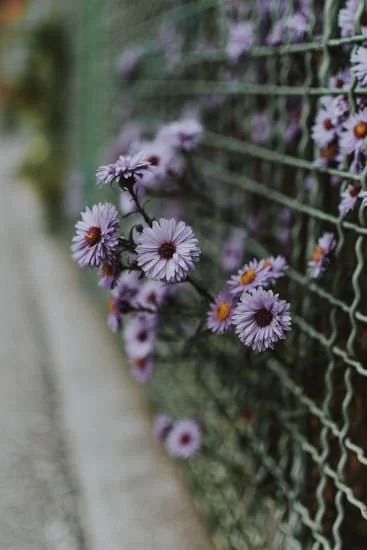Are you looking to start a new hobby that is not only rewarding but also beneficial for your health? Look no further than easy vegetable gardening ideas. Vegetable gardening is a fulfilling activity that allows you to connect with nature, enjoy fresh produce, and add beauty to your home.
One of the reasons why vegetable gardening is so accessible is because it can be tailored to fit any space, whether you have a large backyard or just a tiny balcony. With the right knowledge and tools, anyone can start growing their own vegetables at home. From tomatoes to peppers to lettuce, there are plenty of options for beginners to choose from.
Not only does vegetable gardening provide you with nutritious food and reduce your carbon footprint, but it also offers a sense of accomplishment and pride when you see your hard work pay off in the form of a bountiful harvest. In this article, we will explore easy vegetable gardening ideas that will help transform your home and health.
Choosing the Right Location for Your Vegetable Garden
When it comes to starting a vegetable garden, one of the most important factors to consider is choosing the right location. The success of your garden will greatly depend on this decision as different vegetables require specific conditions to thrive. Here are some tips on selecting the best location for your vegetable garden:
- Sunlight: Most vegetables need at least 6-8 hours of direct sunlight daily. Choose a spot in your yard that receives ample sunlight throughout the day.
- Soil Quality: Ensure that the soil in your chosen location is fertile and well-draining. You can improve soil quality by adding compost or organic matter before planting.
- Accessibility: Consider how easy it will be for you to access your garden for watering, weeding, and harvesting. A location close to your home or water source is ideal.
Moreover, if you have limited space in your yard or live in an apartment, you can still enjoy a bountiful harvest through container gardening. This is a convenient and practical option for those with small outdoor areas or even just a balcony or patio. Here are some easy container gardening ideas to get you started:
- Choose the right size containers based on the type of vegetables you want to grow.
- Use high-quality potting mix specifically formulated for container plants.
- Water regularly and ensure proper drainage by drilling holes in the bottom of your containers.
With these tips on selecting the right location for your vegetable garden and venturing into easy container gardening, you’ll be on your way to enjoying fresh produce grown right at home. Happy gardening.
Selecting the Best Vegetables to Grow for Beginners
When starting a vegetable garden as a beginner, selecting the right vegetables to grow is crucial for success. Choosing vegetables that are easy to cultivate and resilient can help build your confidence as a gardener and ensure a bountiful harvest. Here are some recommendations for the best vegetables to grow for beginners:
Tomatoes
Tomatoes are one of the most popular vegetables to grow and for good reason. They are relatively easy to care for, versatile in terms of culinary uses, and rewarding in terms of yield. There are many varieties of tomatoes to choose from, including cherry tomatoes which are perfect for snacking right off the vine.
Zucchini
Zucchini is another great option for beginners due to its prolific nature. These summer squash plants produce an abundance of fruits that can be harvested throughout the growing season. Zucchini plants also take up minimal space, making them ideal for small gardens or containers.
Lettuce
Lettuce is a quick-growing vegetable that is perfect for beginners who want to see results sooner rather than later. With various types of lettuce available, such as leafy greens or head lettuce, you can enjoy fresh salads straight from your garden within weeks of planting. Lettuce also thrives in cooler weather, making it suitable for spring and fall gardening.
By choosing these beginner-friendly vegetables to grow in your garden, you can ease into the world of vegetable gardening with confidence and enjoy a thriving harvest at the end of the season. Incorporating these easy vegetable gardening ideas will not only provide you with fresh produce but also a sense of accomplishment and connection to nature.
Easy Container Gardening for Small Spaces
Container gardening is a fantastic option for those with limited space but still want to enjoy the benefits of growing their own produce. Whether you have a small balcony, patio, or even just a windowsill, there are easy vegetable gardening ideas that can work for you. By using containers, you can grow a variety of vegetables in a compact and manageable way.
When choosing containers for your vegetable garden, make sure they have good drainage to prevent waterlogging the roots. You can use planters, pots, or even repurpose items like buckets or crates as long as they have drainage holes. Additionally, consider the size of the container based on the vegetable you intend to grow – larger plants like tomatoes may need bigger containers compared to smaller herbs like basil.
Some great vegetables to grow in containers include cherry tomatoes, peppers, lettuce, radishes, and herbs like basil or parsley. These plants thrive in smaller spaces and do not require extensive root systems to grow successfully. With the right soil mix and regular watering, you can enjoy a bountiful harvest from your container garden throughout the growing season.
| Vegetable | Container Size |
|---|---|
| Cherry Tomatoes | 5-gallon pot |
| Lettuce | Shallow window box |
| Basil | 8-inch pot |
Essential Tools and Supplies for Vegetable Gardening
When embarking on your vegetable gardening journey, having the right tools and supplies is essential to ensure a successful and enjoyable experience. Here are some key items that every aspiring gardener should have in their arsenal:
- Quality Gardening Gloves: Protect your hands from thorns, cuts, and dirt with a reliable pair of gardening gloves. Look for ones that provide both comfort and dexterity.
- Garden Trowel: A sturdy garden trowel is indispensable for tasks such as planting, transplanting, and digging small holes. Choose one with a comfortable handle and durable construction.
- Watering Can or Hose: Proper hydration is crucial for your vegetable plants’ health, so make sure you have a reliable watering can or hose to keep them well-watered.
- Pruning Shears: Keep your plants in tip-top shape by investing in a good pair of pruning shears for trimming dead leaves, flowers, or branches.
In addition to tools, having the right supplies on hand will also make your gardening experience smoother and more efficient. Here are some must-have supplies for vegetable gardening:
- High-Quality Soil: Good soil is the foundation of any successful garden. Invest in nutrient-rich soil that promotes healthy plant growth.
- Fertilizer: Supplement your soil with the necessary nutrients by using organic fertilizers to support robust plant development.
- Pots or Planters: If you’re opting for container gardening, make sure to have an adequate number of pots or planters in various sizes to accommodate different vegetables.
- Mulch: Mulch helps retain moisture in the soil, suppresses weeds, and maintains an even soil temperature. Consider using organic mulches like straw or wood chips.
By equipping yourself with these essential tools and supplies, you’ll be well-prepared to tackle the challenges of vegetable gardening and set yourself up for a bountiful harvest of fresh produce. Remember that investing in quality items upfront will save you time and effort in the long run, making your gardening experience even more rewarding.
Planning and Designing Your Vegetable Garden Layout
When planning and designing your vegetable garden layout, there are several factors to consider that can contribute to the success of your gardening endeavor. One key aspect to keep in mind is the amount of sunlight that different areas of your garden receive throughout the day.
Vegetables typically require at least 6-8 hours of sunlight daily, so it’s important to place your garden in a location that maximizes sun exposure. This can vary depending on your geographical location, so be sure to observe and take note of where the sun hits your yard the most.
Another consideration when designing your vegetable garden layout is spacing between plants. Different vegetables have varying requirements for spacing based on their size and root systems. Be sure to follow guidelines for plant spacing to ensure that each plant has enough room to grow and thrive. Overcrowding can lead to poor air circulation, which can increase the risk of pests and diseases affecting your plants.
Lastly, think about creating an easy-to-navigate layout that includes pathways for access to all areas of your garden. This will not only make it easier for you to tend to your plants but also help prevent soil compaction from repeatedly walking on planting beds. Consider incorporating raised beds or utilizing vertical gardening techniques if space is limited, as these methods can maximize growing area while making maintenance more convenient.
| Aspect | Details |
|---|---|
| Sunlight Exposure | 6-8 hours daily is ideal for vegetable growth |
| Spacing Between Plants | Follow guidelines for optimal growth and prevent overcrowding |
| Layout Design | Create pathways for easy access and consider raised beds or vertical gardening for space optimization |
Simple Tips for Watering and Maintaining Your Garden
Watering and maintaining your vegetable garden is crucial to ensure a healthy and thriving harvest. One of the easiest vegetable gardening ideas is to establish a consistent watering schedule. Different vegetables have different water requirements, so it’s essential to research the specific needs of the plants you are growing.
Generally, most veggies prefer deep, infrequent watering rather than frequent shallow watering to encourage root growth. Investing in a soaker hose or drip irrigation system can make this process more efficient by delivering water directly to the base of the plants.
In addition to watering, regular maintenance tasks such as weeding, pruning, and monitoring for pests and diseases are important for the overall health of your vegetable garden. A helpful tip is to regularly inspect your plants for any signs of trouble, such as yellowing leaves or unusual spots.
By catching issues early on, you can prevent them from spreading and potentially harming your entire garden. Weeding is another essential part of maintaining your garden as it helps reduce competition for nutrients and water while preventing pests from taking refuge.
When it comes to fertilizing your vegetable garden, opt for organic options like compost or well-decomposed manure. These natural fertilizers not only provide essential nutrients to your plants but also improve soil health over time.
Avoid over-fertilizing as it can lead to nutrient imbalances and harm beneficial soil organisms. By following these simple tips for watering and maintaining your garden, you’ll set yourself up for a successful growing season with a bountiful harvest of fresh produce right at your fingertips.
Dealing With Common Pests and Diseases in Your Vegetable Garden
Identifying Common Pests
One of the key challenges that many vegetable gardeners face is dealing with pests that can damage their plants. Some common pests include aphids, caterpillars, snails, and slugs. These pests feed on your plants, causing wilting, yellowing leaves, or even complete destruction if left unchecked. By regularly inspecting your plants for signs of pest damage, you can take early action to prevent further infestation.
Natural Pest Control Methods
Using chemical pesticides can harm beneficial insects and pollinators in your garden, so it’s best to opt for natural pest control methods whenever possible. One effective method is companion planting, where you grow certain plants together to repel pests or attract beneficial insects. For example, planting marigolds near your vegetable garden can help deter nematodes and other harmful insects. You can also use homemade solutions like garlic spray or neem oil to repel pests without harming your plants.
Preventing and Managing Diseases
In addition to pests, diseases can also pose a threat to your vegetable garden. Common plant diseases like powdery mildew, blight, and root rot can quickly spread among your plants if not addressed promptly. To prevent diseases, ensure proper spacing between plants for good air circulation, avoid overwatering which can lead to fungal growth, and practice crop rotation each season.
If you notice any signs of disease on your plants, remove affected parts immediately to prevent further spread and consider using organic fungicides as a last resort. By staying vigilant and taking proactive measures against pests and diseases, you can protect your vegetable garden and ensure a healthy harvest of fresh produce.
By implementing these easy vegetable gardening ideas for dealing with common pests and diseases in your vegetable garden, you can effectively maintain the health of your plants without the need for harsh chemicals. With a little extra care and attention to detail, you can enjoy a bountiful harvest of home-grown vegetables while creating a thriving ecosystem in your garden.
Harvesting and Enjoying the Fruits of Your Labor With Easy Recipes for Fresh Produce
Growing your own vegetables can be a rewarding experience, especially when it comes time to harvest and enjoy the fruits of your labor. From crisp lettuce to juicy tomatoes, having a bountiful harvest from your garden opens up a world of culinary possibilities. With easy vegetable gardening ideas, you can transform your home cooking with fresh, homegrown produce.
One of the best parts of growing your own vegetables is being able to enjoy them at their peak freshness. When you pick vegetables straight from your garden, you can taste the difference in flavor and quality compared to store-bought produce. Whether you’re making a simple salad with freshly harvested greens or using ripe tomatoes for homemade pasta sauce, incorporating homegrown vegetables into your meals adds a level of freshness that simply can’t be beat.
To make the most of your harvest, try experimenting with easy recipes that highlight the flavors of your freshly picked vegetables. Roasting a medley of root vegetables with herbs and olive oil can create a simple yet delicious side dish.
Or toss together some diced cucumbers, tomatoes, and onions for a refreshing summer salsa. By getting creative in the kitchen and using the abundance of your garden, you’ll not only savor the flavors but also appreciate the effort you put into growing your own food.
Conclusion
In conclusion, incorporating easy vegetable gardening ideas into your lifestyle can truly transform both your home and health. By choosing the right location, selecting beginner-friendly vegetables to grow, utilizing container gardening for small spaces, investing in essential tools and supplies, planning a well-designed layout, and maintaining your garden with simple watering techniques, you can enjoy a bountiful harvest of fresh produce right at your fingertips.
Not only does vegetable gardening provide you with nutritious and delicious food options, but it also offers a sense of accomplishment and satisfaction as you watch your plants grow and flourish. Dealing with common pests and diseases may seem daunting at first, but with proper knowledge and diligence, you can overcome these challenges and continue to reap the benefits of your hard work.
From planting to harvesting, the process of vegetable gardening is not only rewarding but also therapeutic. Transforming your outdoor space into a thriving garden can bring joy and tranquility to your daily routine. So why not start today? With these easy vegetable gardening ideas, you can embark on a journey towards a healthier lifestyle while creating a beautiful green oasis in your own backyard.
Frequently Asked Questions
What Is the Easiest Vegetable Garden for Beginners?
The easiest vegetable garden for beginners is one that includes low-maintenance plants like lettuce, radishes, and tomatoes. These vegetables are relatively easy to grow and require minimal effort in terms of care and maintenance.
What Vegetables Are Easiest to Grow for Beginners?
Beginners in gardening would find it easiest to grow vegetables like zucchini, cucumbers, and green beans. These plants are known for being resilient, fast-growing, and not too demanding when it comes to soil quality or sunlight exposure. They are perfect for those just starting out with a vegetable garden.
What Is the Best Layout for a Vegetable Garden?
The best layout for a vegetable garden depends on several factors such as the size of the space available, the types of vegetables you want to grow, and how much sunlight the area receives. However, a common recommendation is to arrange plants in rows or raised beds to make watering, weeding, and harvesting more manageable.
Additionally, grouping vegetables with similar watering needs together can help simplify maintenance tasks.

Welcome to my gardening blog! I am passionate about plants and enjoy sharing my knowledge and experiences with others. In this blog, I will write about everything related to gardening, from tips on how to get started to updates on my own garden projects.





